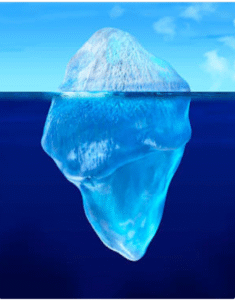When a photon hits your eye, it’s a particle. When it hits your eye, it interacts with a particular electron in the retina of your eye. It energizes the electron with a lump of energy (a quantum), and this creates an electrical signal in your brain, contributing to a visual image.
When the photon hits one tiny spot, the electron, and when it activates the electron with a lump of energy, these are particle behaviors. Particles are highly localized and deliver energy in lumps. Waves are spread out.
Light also has wave properties. But the wave properties manifest at times when light isn’t being detected. This is wave-particle duality. It’s the reason that some physicists have suggested that quantum particles be called “wavicles.” I think that “wavicle” would actually be better than calling them “particles” even when they’re behaving like waves!
All quantum particles have wave-quality duality, but I’ll focus on photons in this article.
How can a photon be both a particle and a wave?
Many interpretations of quantum physics do not attempt to harmonize the particle and wave properties of light into one coherent concept. The three main interpretations that attempt this are Many Worlds, Bohmian, and Transactional. All three of these, like all mainstream quantum physics interpretations, are quite similar or identical in their mathematics and their empirical predictions.
Transactional Intepretation of Wave/Particle Duality
The Transactional Interpretation makes the most sense to me. It holds that light (and other quantum particles) act as particles when they interact with other particles.* This is the case when a photon interacts with an electron in the eye.
At other times, light continues as a real entity, but a real entity that underlies the one we can reach with our physical instruments. We could call this level of reality “Quantumland.”
Wave-Particle Duality in the Transactional Interpretation
Quantumland is a sub-level of reality, like the unseen part of an iceberg. We see the tip of the iceberg—that’s the everyday world of table and chairs, the


*For a lay explanation of the Transactional Interpretation, see Dr. Ruth Kastner, “Understanding Our Unseen Reality, Solving Quantum Riddles.” Also see Transactional interpretation – Wikipedia
